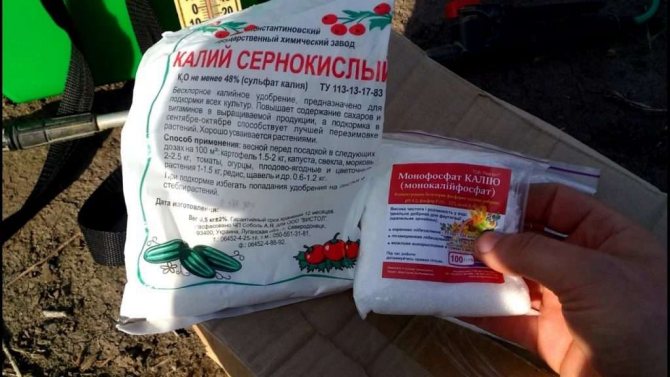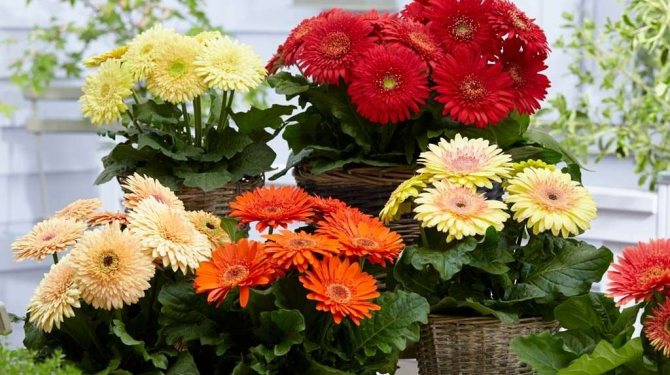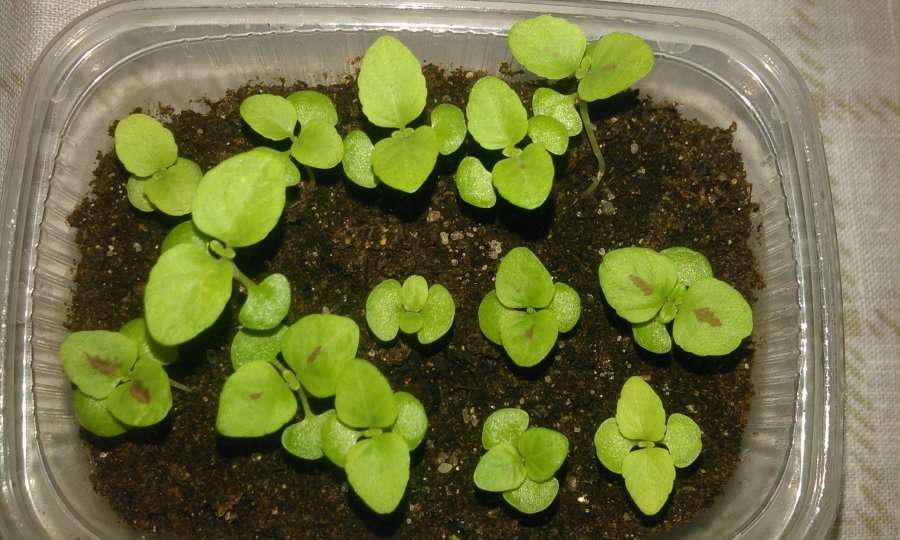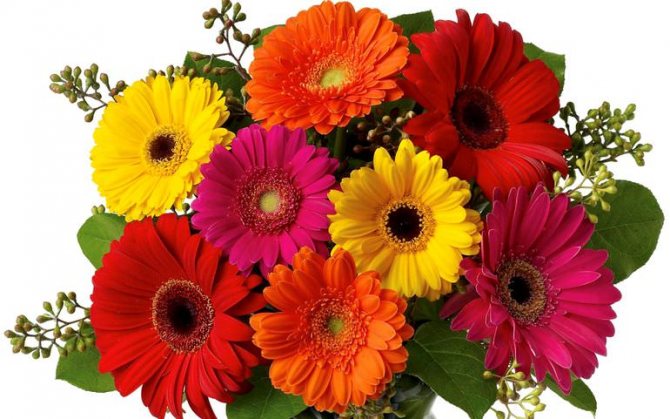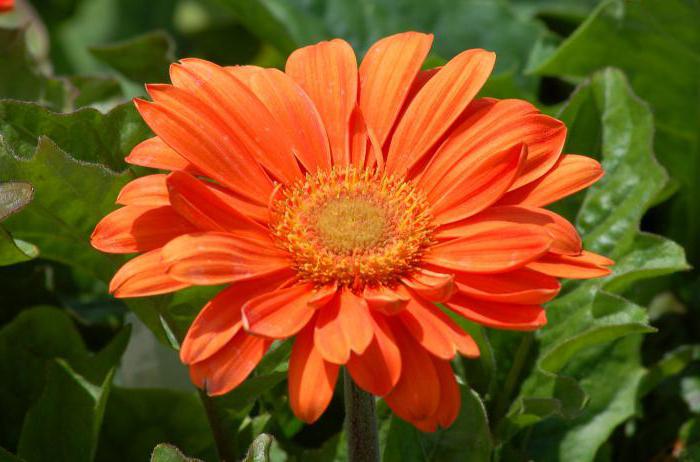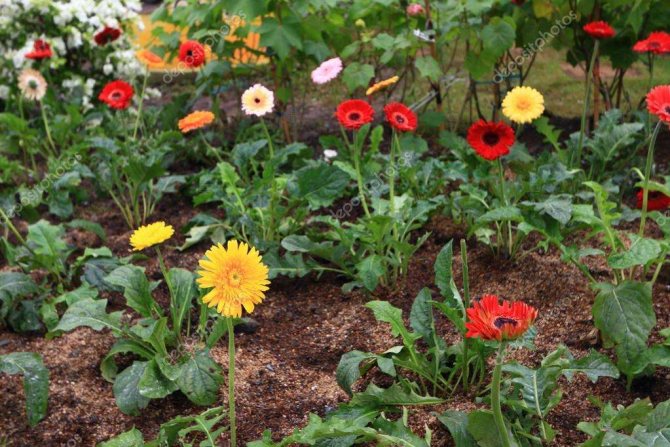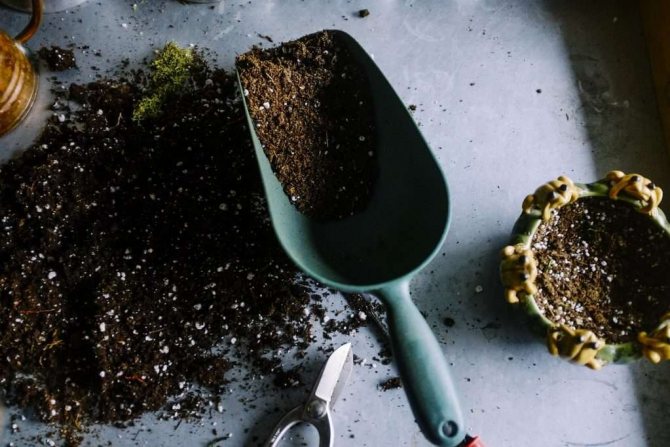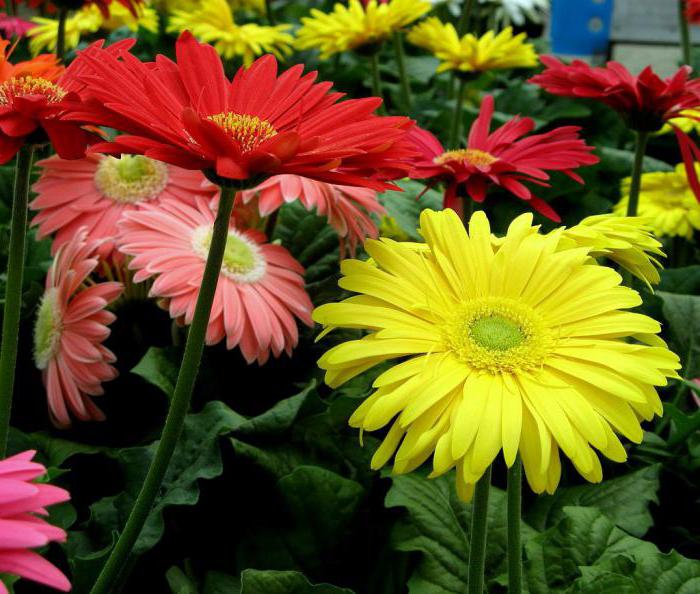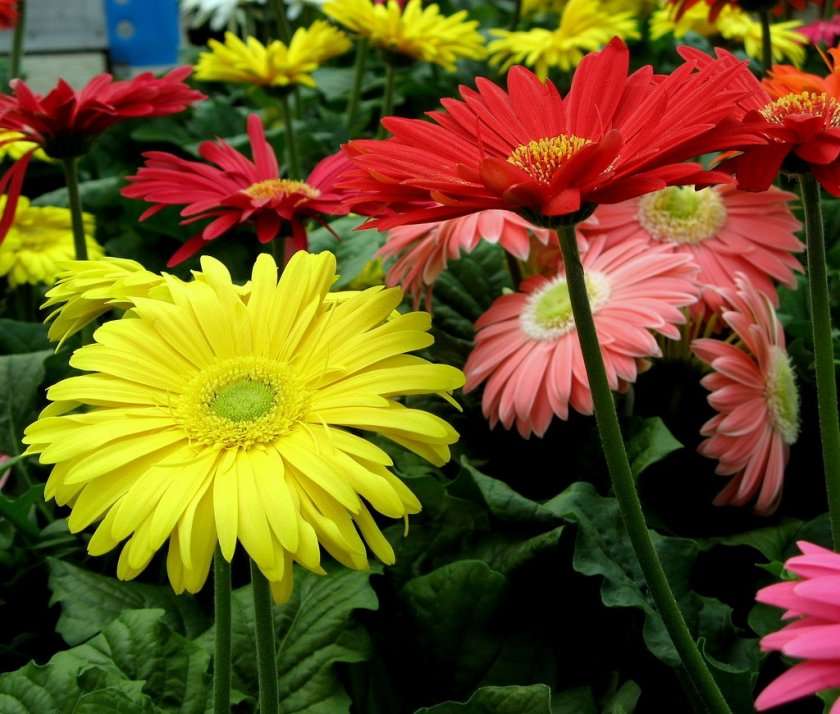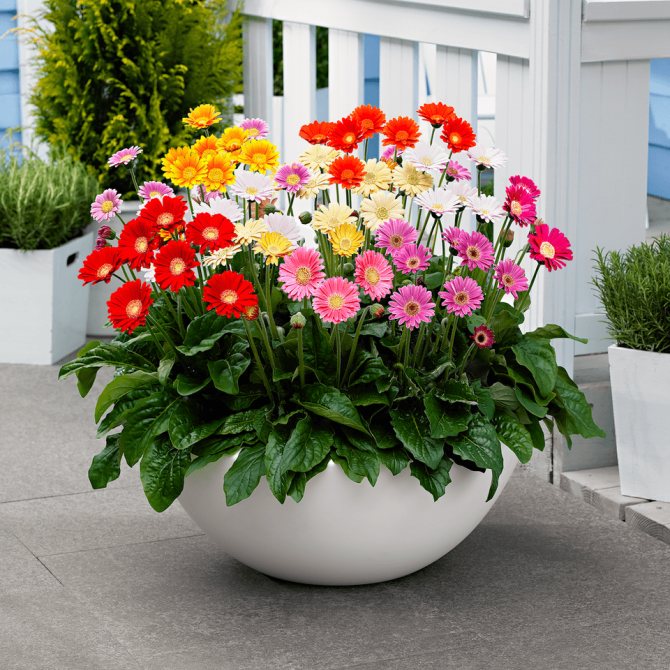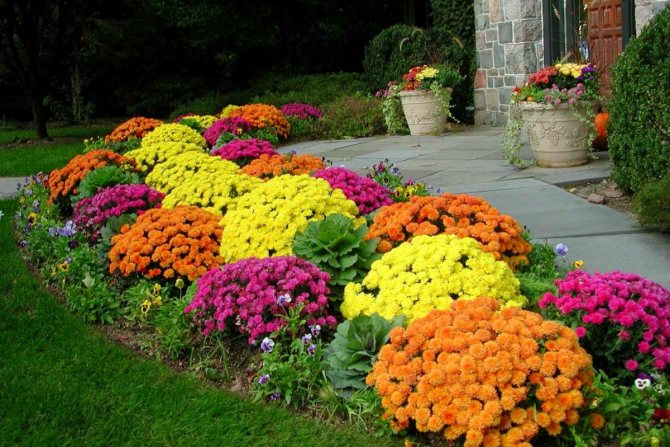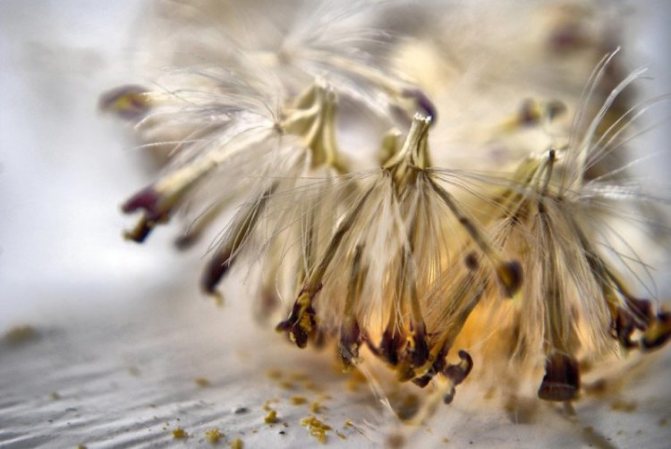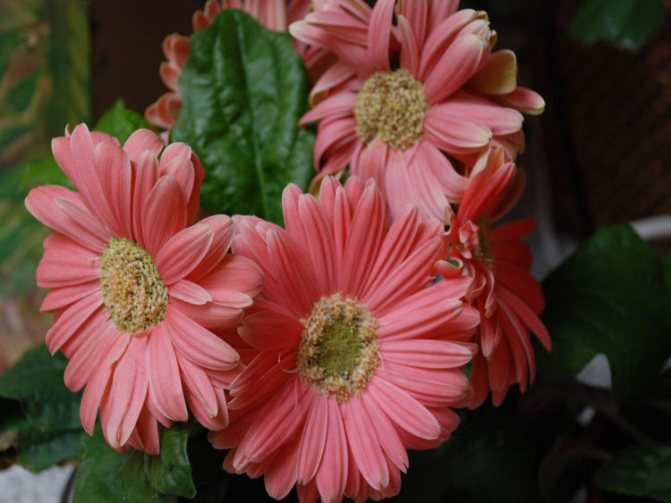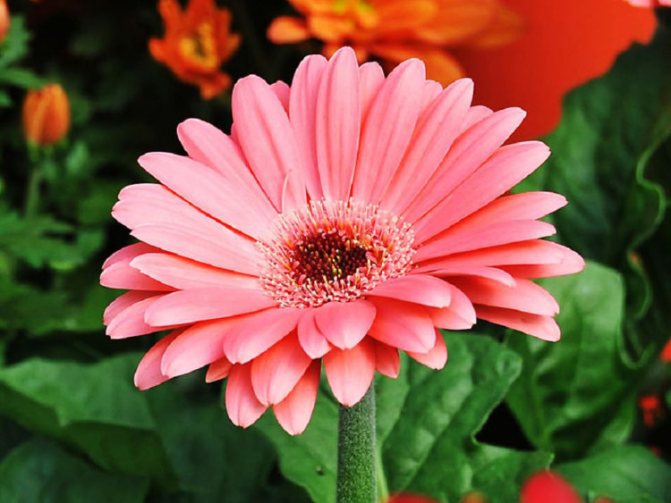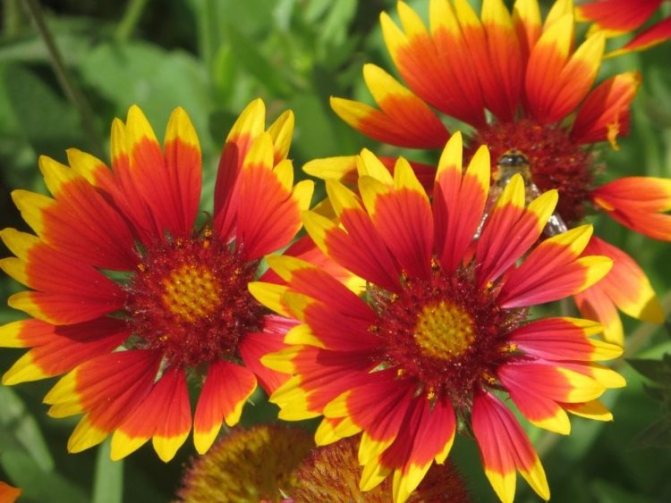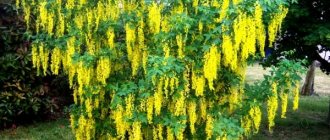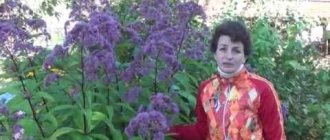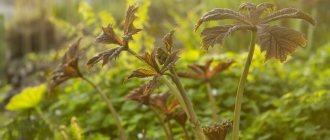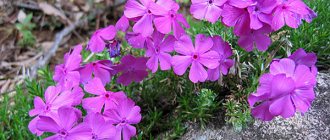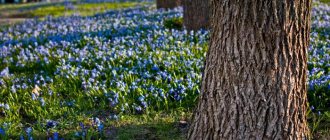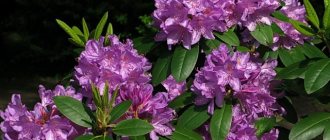Home »Flowers and plants» Flowers »Perennial flowers
Perennial flowers
Annie Cooper
1 comment

Garden gerbera is a perennial herb from the Astrovye family, which is considered quite picky in terms of care. To grow a flower on a personal plot, a gardener needs to know and apply tips and advice on agricultural techniques, in particular, on planting and care.
- Description of the flower
- Landing in open ground
- Temperature and lighting
- Watering
- Top dressing
- Reproduction
- In a vegetative way
- By cuttings
- How to grow seedlings by seed method
- Plant transplant
- Features of care during the flowering period
- Winter care
- Diseases and pests
- Possible growing problems
- Perennial species
- Plant varieties
- Application in landscape design
- PHOTO GALLERY
Description of the flower
There are several dozen species of garden gerbera, most of which grow in their natural environment on the African mainland and in tropical regions of Asia.
Gerbera, due to its characteristic flower shape, is also called the Transvaal chamomile or daisy (Transvaal is the area in South Africa where flowers were first discovered).
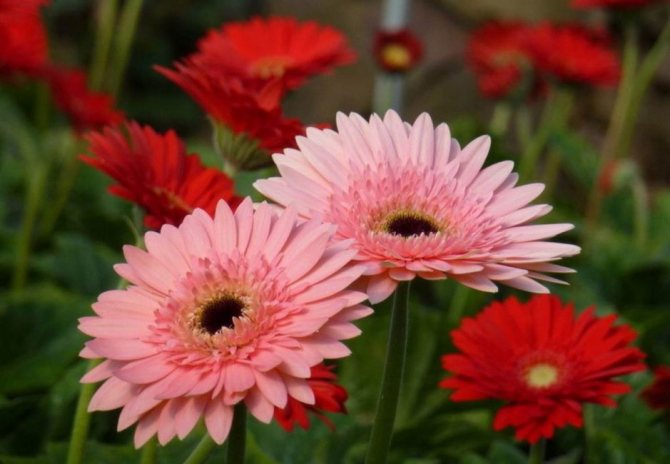

South African exotic flower
See also: Daffodils: description, planting and care in the open field, transplanting, reproduction, when to dig out and what to do after flowering (55+ Photos & Videos) + Reviews
The plant has the shape of a shrub 25-35 cm high, although some species reach half a meter. Leaves are basal, fleshy, elongated with sharp tips, collected in a rosette. The roots are short, fibrous.
The flower was discovered in South Africa, was first described in the 18th century and got its name in honor of the botanist from Germany Traugott Gerber.
The peduncle is smooth and pubescent, rises above the foliage... It ends in a chamomile-like flower that blooms for 30–35 days. The inflorescence is round, collected in a basket. The petals are reed-shaped, tapering towards the base. They can be simple, semi-double and terry.
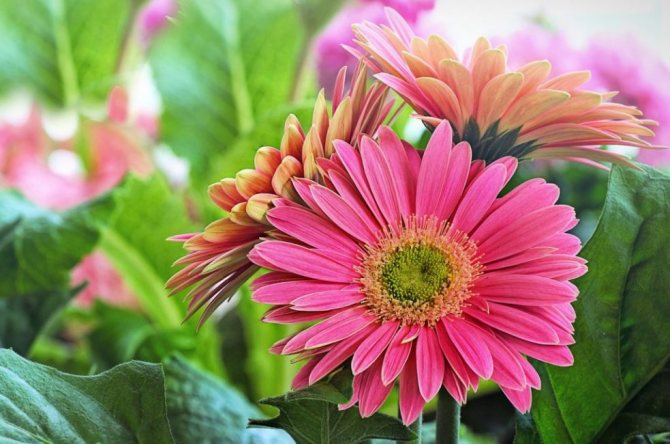

Gerbera flower stalk
See also: Perennial Geichera - when leaves are more important than flowers: description, planting in the open field, care (80+ Photos & Videos) + Reviews
The diameter of the flower is large - 10 ... 12 cm, the color is allowed in all shades of white, red, pink and yellow. The flower of the hybrid variety can reach 25 ... 30 cm in diameter. The middle of the inflorescence is round and brown.
Gerbera fruits - small seed pods... The plant blooms for 3 months, and in total, up to 20 flowers can form on the shrub per season.
back to menu ↑
Read also: TOP-22 of the most popular and non-whimsical ornamental shrubs for a summer residence or a private house (90 Photos & Video) + Reviews
Varietal variety
To succeed in growing a plant, it is worth choosing the right variety and providing it with adequate care.
See also
Growing and caring for pelargonium at home for beginners


Jupiter
This variety has a pleasant aroma and a long flowering period.The plant is characterized by long and narrow petals, which is why it looks like a chamomile. The stem reaches 70 centimeters.
Mars
Peduncles of this variety dissolve whole baskets, which have several rows of petals.
Alcor
This variety is characterized by a rich cherry hue. Plants are decorated with small flowers. The bushes reach a height of 50 centimeters.
Migar
It is a narrow-leaved plant with large flowers. It is decorated with long narrow petals that diverge in different directions. The flowers are bright pink.
Romeo
This variety is characterized by rich red inflorescences that have excellent decorative properties.


Delios
These bushes are decorated with bright red flowers. Therefore, the culture is grown on their plots by many growers.
ALGOL
This is a fairly tall culture, which reaches 70 centimeters in height. The flower reaches 13 centimeters in diameter.
Durora mix
This variety is characterized by a variety of colors. The culture is distinguished by large inflorescences and short stems.
Parade
It is an attractive red gerbera that is well-deservedly popular with gardeners.
Elegans
This variety is characterized by a yellow color. There are also pink varieties of the variety. The culture has strong roots and elongated leaves.


Vincent
The plant has yellow inflorescences with a black center. Thanks to this, it looks very impressive.
Royal
This is a category of dwarf varieties that are compact in size and serve as a real decoration of the site.
Lemon
This variety is characterized by yellow flowers.
White
The culture has white flowers.
Champagne
This plant is characterized by champagne-colored petals.


Yellow
The plant has spectacular yellow inflorescences.
Orange scarlet
The culture has orange petals.
Landing in open ground
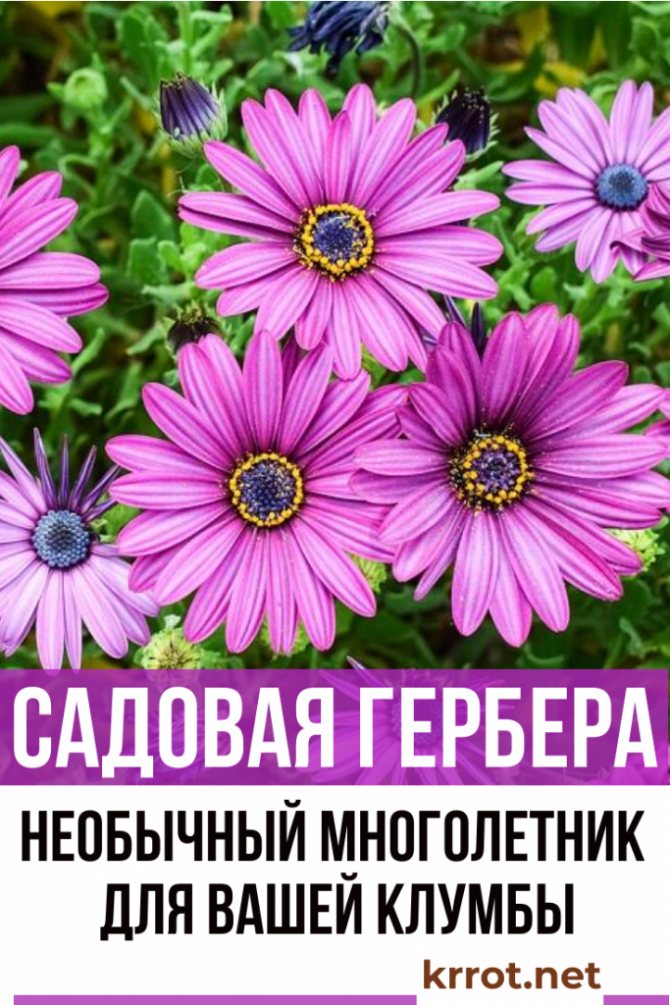

The optimal time for planting gerberas in the soil is mid-May.when the risk of returning night frosts is completely excluded. It is not worth delaying the planting period, because this way you can shorten the flowering period.
When choosing a landing site, you should pay attention to open, well-lit places.... The preferred soil for gerberas is nutritious, well-drained, with a low level of acidity.
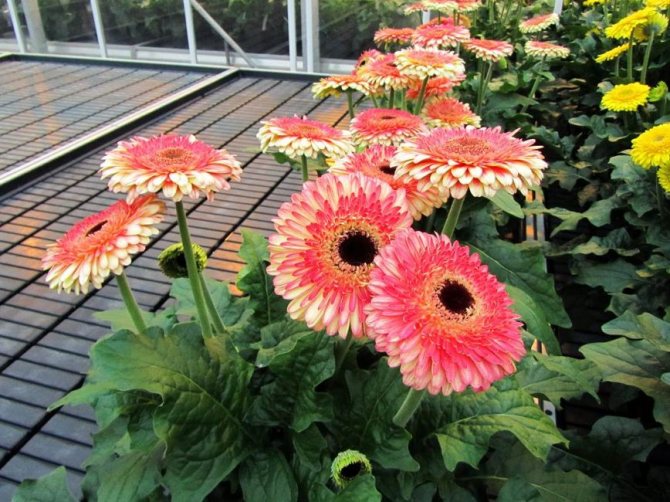

Growing in a greenhouse
Read also: Poppy is a bright ornamental plant: description of perennial and annual flowers, planting and care, methods of reproduction, possible diseases (70 Photos & Video) + Reviews
In gardening stores, you can buy specialized soil for gerberas or roses, but you can make a soil mixture for a flower garden yourself. To do this, mix in equal proportions deciduous turf, peat and drainage (sand or perlite).
When planting seedlings and cuttings, the soil is treated with phytosporin against fungi... Small holes (3-5 cm deep) are made in the ground, on the bottom of which expanded clay or crushed brick is placed. Seedlings are covered with earth and watered.
If there is a danger of frost return, then the seedlings in the open field are covered overnight with non-woven cloth or other protective material. It is also possible to prepare a mobile prefabricated shelter from spunbond (thermally bonded fiber) stretched over a wire frame.
It is not recommended to plant perennials next to conifers, which can become a carrier of rust.
The best precursor plants for perennials will be calendula and marigolds, which saturate the soil with phytoncides. Difficulties with the growth of a flower will arise when planting on an area after tulips, gladioli, potatoes, tomatoes and other nightshades (pathogenic fungi may remain in the soil from them).
back to menu ↑
See also: Garden azaleas: description, varieties, planting and care in the open field, preparation for wintering (50 Photos & Videos) + Reviews
Growing at home
It is even easier to grow gerberas at home than in the open field.It is necessary to start preparing for planting plants by choosing a container. Attention should be paid to the shape and height of the flowerpots. These are the most important parameters. As for the transparency of the pot, this is completely irrelevant. The gerbera root system does not take part in photosynthesis, access to the lighting system does not matter, so the plants do not need special transparent flowerpots at all. Flowers will be as comfortable as possible in a deep clay pot that expands upward.
Before planting, the flowerpots must be disinfected. For this, ordinary boiling water or a weak solution of potassium permanganate is used. This procedure is mandatory, especially if the pot has been used before. Then you can start planting.
After the selection of the flowerpot, it is necessary to start preparing the soil mixture. You need to use a special soil consisting of leaf humus, peat and sand. The ingredients are mixed in a 2: 2: 1 ratio, respectively. A drainage layer is laid on the bottom of the tanks, for example, from crushed bricks. You need to carefully transplant seedlings into flowerpots so as not to harm the young root system of the gerbera.
It is not necessary to deepen the plants too much, it will be enough that the root collar remains 1-2 centimeters above the ground. After transplanting, it is recommended to actively feed the seedlings in accordance with all the rules of care. Vases should be left in a well-ventilated area. Gerberas are not afraid of drafts at all.
Temperature and lighting
Warmth and diffused sunlight are key requirements for growing beautiful large flowers... If there is not enough sun for the plant, its stem will stretch, and the diameter of the flower will be small.
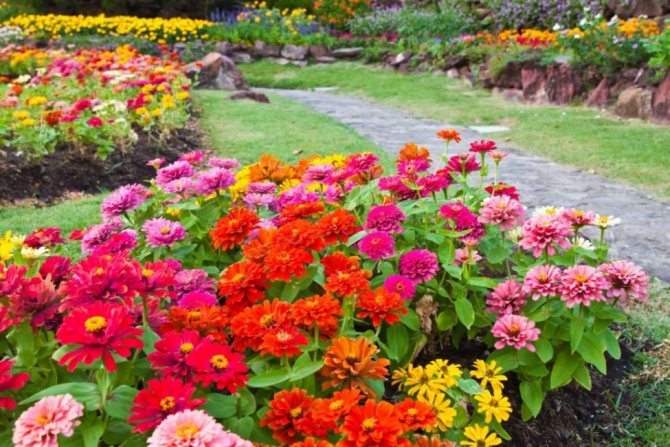

Perennial in a flowerbed
See also: Phlox - record holders for flowering: description, planting in the open field, reproduction and care (85+ Photos & Videos) + Reviews
In the midday heat, in sun-drenched areas, gerbera leaves may wilt, but by the evening the turgor is restored.
The location of the flower garden in dark places, lowlands and in thick shade can provoke root rot - a disease to which the plant is already very susceptible.
Gerberas do not tolerate a sharp temperature drop, and may even die from drafts. The optimal temperature regime for a flower is 10-12 degrees.
back to menu ↑
See also: Chubushnik: description of 20 varieties, planting and caring for shrubs in the garden, possible diseases (110+ Photos & Videos) + Reviews
Transvaal chamomile in a flower bed
Gerbera has another name - Transvaal chamomile, which belongs to the family of Compositae... Its flowers of rare beauty are often used to create festive bouquets. The plants reach a height of 20-30 cm. Its thick leaves form a rosette, and a peduncle rises between them.
There are many varieties of gerbera. They differ:
- color;
- type of inflorescence;
- dimensions;
- terry flower.
Attention: Inflorescence is a basket made up of 2 types of small flowers. In the central part there are small tubular flowers, and along the edges of the pistils there are pseudo-ligate flowers.
Watering
Gerbera leaves are wide and actively evaporate water from the surface, so the plant needs regular watering... For 1 m2 of a flower garden, 25 liters of water are consumed. The table shows an approximate watering scheme depending on the stage of plant development.
| Gerbera growth stage | Watering nature |
| Before the buds are born | Abundant |
| Flowering period | Moderate, do not dry out |
| In winter (if the flower was transplanted into a pot) | Not plentiful, but regular |
Water for irrigation should be at room temperature, separated. You can draw water in the morning, let it warm up in the sun during the day, and start watering in the evening.
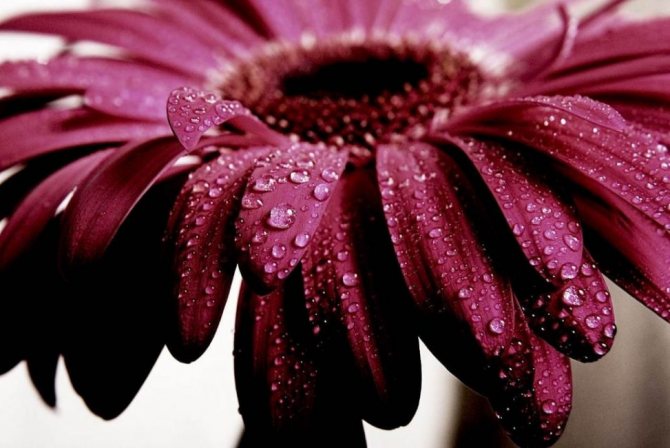

Burgundy gerbera
See also: Saxifrage: description, types and varieties, reproduction, growing from seeds, planting in open ground, care (110+ Photos & Videos) + Reviews
When watering, do not allow moisture to enter the outlet - this can lead to decay of the rhizome.
It is recommended to pour water directly under the root of the plant, so as not to erode the soil and not to expose the defenseless fibrous rhizome. It is necessary to ensure that during watering, moisture does not fall on the rosette of the leaves, this can lead to decay.
Whether the perennial roots are sufficiently moistened can be understood precisely by the state of the leaves: if they turn yellow and dry, then watering is insufficient, excess moisture leads to decay.
After each watering, the soil is loosened to a depth of 6-7 cm and freed from weeds... A crust should not be allowed to appear on the surface of the soil - it impedes the supply of oxygen to the roots of the plant.
back to menu ↑
See also: Campsis: description, types, planting in the open field, reproduction and care of a beautiful liana (85+ Photos & Videos) + Reviews
Division
The flower in the fall must be dug up and transplanted into a wide pot, the diameter of which must be at least 20 cm. It must be in accordance with the size of the plant. Gerbera reproduces by dividing the bush and seeds.
The first method is the simplest and most common. In this case, in April-May, the bushes, which have already turned 2-3 years old, are divided into 5-7 parts. Each of them should have 2-3 young leaves. If the length of the roots is more than 10-15 cm, then they must be cut... When planting young seedlings, you need to look so that the rosette is above the ground at a height of 1-1.5 cm. Otherwise, the plant will grow poorly.
The seeds are sown into the soil to a depth of 2-3 mm. Containers with planted seeds are placed in places where direct burning sunlight does not fall. After 7-14 days, seedlings will appear, after the formation of leaves, they are transplanted into pots.
How to plant and plant properly?
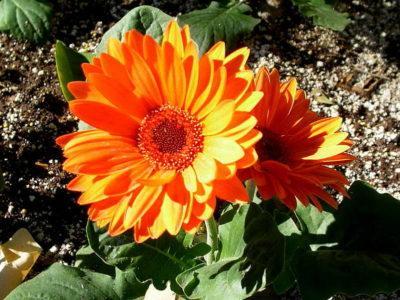

When planting a garden gerbera, the region must be taken into account... In places where summers are hot and humid and winters warm, the plant will be perennial. In the winter months, simply covering it up is sufficient. In order for it to bloom as long as possible, one must not forget about nutrients. With their deficiency, the flowers become small. Watering gerberas is necessary only at the very root of the bush.
There are certain rules for planting a gerbera. You need to plant a flower only in warm ground.
Seedlings must be removed very carefully so that the roots are not damaged. Each of them must have a good root, otherwise the flower will not take root.
How does one fall asleep and wake up?
Gerberas bloom for 3-4 months, after which they fall asleep... During this period, they accumulate strength for the upcoming flowering stage. Garden species of plants, which are not dug up for the winter, begin to bloom the next year.
Top dressing
The plant needs liquid feeding twice a month.... The perennial is well tolerated by mineral fertilizers, and from an excess of organic fertilizers it can lose its decorative properties (the flowers will be small, and the shrub is often sick). However, to stimulate growth once a season, it is allowed to use cow dung as a top dressing.
The best option for gerbera is a complex mixture of fertilizers for flowering plants... A perennial reacts well to magnesium sulfate, and the lack of illumination can be compensated for with a phosphorus-containing fertilizer.
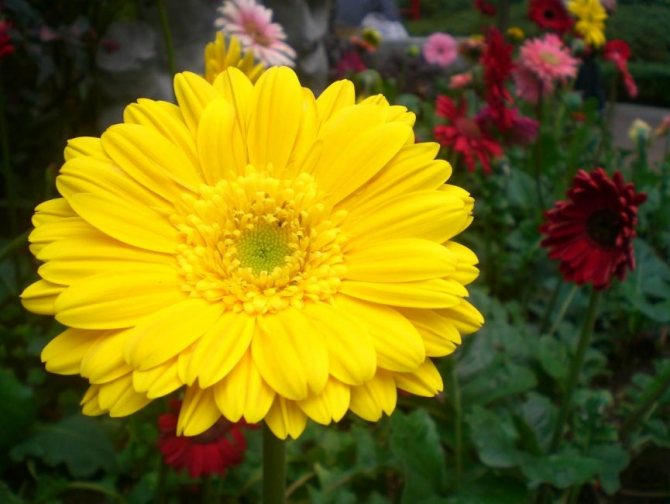

Yellow gerbera
See also: Perennial lupins: description of the plant, growing from seeds, planting in open ground and caring for them (50+ Photos & Videos) + Reviews
The flower cannot be fed with organic fertilizers and chlorine-based preparations. Gerberas are contraindicated in fertilizing with substances containing chlorine, especially potassium chloride.
For abundant flowering, the presence of minerals in the soil is important:
- phosphorus
- manganese
- magnesium
- potassium
In the fall, you can add maintenance mixtures less often - once a month. When the plant has bloomed, feeding can be stopped.
back to menu ↑
Read also: Ageratum: description, planting in open ground and caring for it at home (30+ Photos & Videos) + Reviews
Reproduction methods
New copies of gerberas can be obtained in 3 ways:
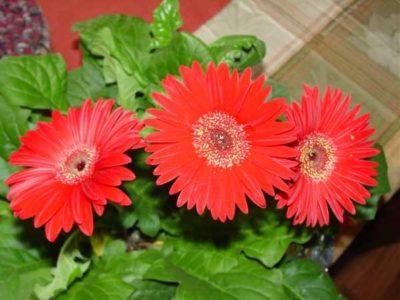

Seeds... We will talk about this in more detail below. A flower grown in this way will bloom for the first time only after almost a year. For cultivation, you can use seeds collected with your own hands.- Cuttings... Cuttings are used to preserve the characteristics of hybrid varieties when seed propagation is not suitable. To do this, cut off a part of the stem with a knot and a leaf, and then root it in the ground.
- By dividing the rhizome... To do this, take out an adult plant from the ground and divide the roots. This method, as well as cuttings, helps to obtain a varietal plant similar in characteristics.
Read in detail about all methods of gerbera reproduction in our material.
Reproduction
Gerbera, like other representatives of Astro perennials, can be propagated by cuttings, dividing a bush or seeds.
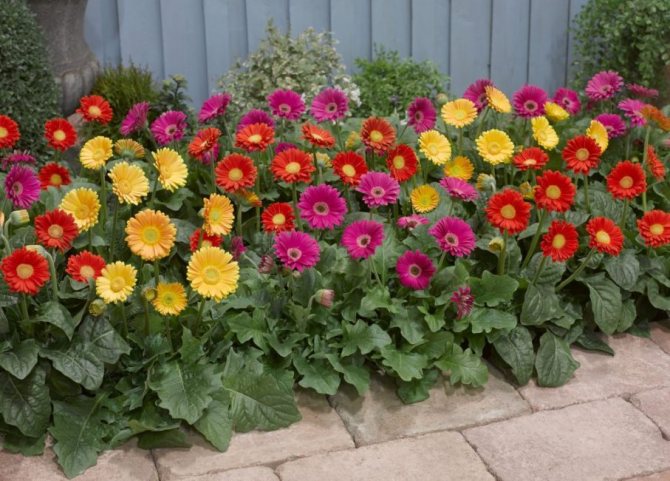

Gerbera garden design
See also: Golden-red Gaillardia perennial: description, growing from seeds, planting in open ground and care (45+ Photos & Videos) + Reviews
back to menu ↑
See also: Aquilegia: the 25 most common species, planting, care and reproduction rules (70+ Photos & Videos) + Reviews
In a vegetative way
The main method of reproduction of a bush is to divide an overgrown bush.... It is used for reproduction of valuable plants, because it allows you to preserve varietal characteristics.
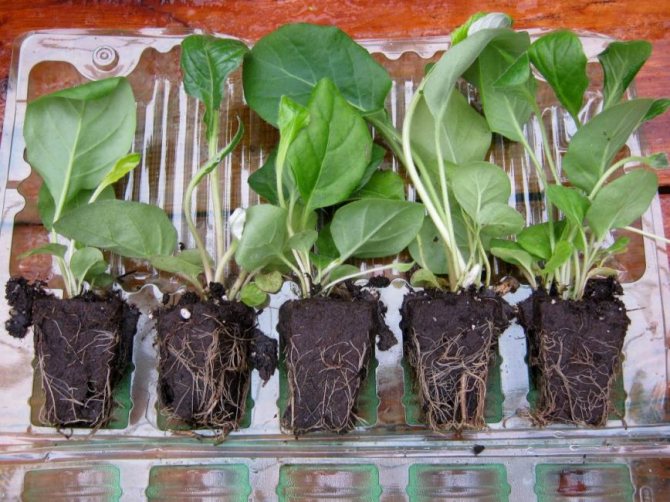

Gerbera seedlings
See also: Callas: home care - features of an exotic plant (30+ Photos) + Reviews
Dividing a bush is a reliable way to preserve the varietal characteristics of a flower... Rejuvenating division is shown for an adult plant at 3-4 years of age. This procedure is usually performed in early spring, separating a young shoot with 1-2 leaves from the mother bush. In this case, it is recommended to shorten the roots to 10 cm.
Rooting of a delenka takes an average of 35 days... In this case, the gerbera rosette should not protrude more than 1 cm above the ground surface.
back to menu ↑
See also: Ever-flowering begonia: description, types, planting in the open field and care, possible diseases (60 Photos & Video) + Reviews
By cuttings
Cutting an already mature bush allows you to get a viable, high-quality planting material of the variety the gardener needs. After grafting, the shoots will give flowers the next year.
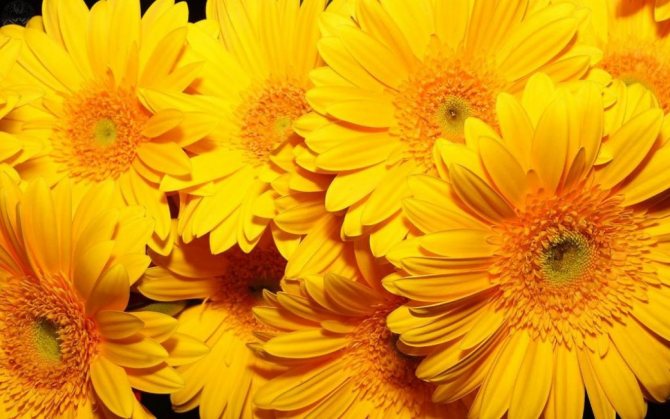

Yellow gerberas
See also: Hyacinth (80+ Photos) - Planting, care and reproduction at home - Elegant bouquet on the windowsill + Reviews
In order to get cuttings you should:
1Dug out the bush, clean the root system of soil, rinse it with running water.
2 Remove the rosette of leaves.
3 Plant the accumulation of roots in a greenhouse, wait for the emergence of shoots from the axillary buds (this usually happens after 2 weeks).
4When the shoots are strong, they can be planted in open ground as cuttings.
back to menu ↑
See also: Marigolds (Chernobrivtsy) are one of the best annuals. Description, growing from seeds, planting and care, possible diseases (80+ Photos & Videos) + Reviews
How to grow seedlings by seed method
When buying seeds of a plant for germination, it is important to monitor their germination period - it is only 7 months. They are sown in early autumn or from January to March. Seeds of African exotic species remain viable for 7-8 months.
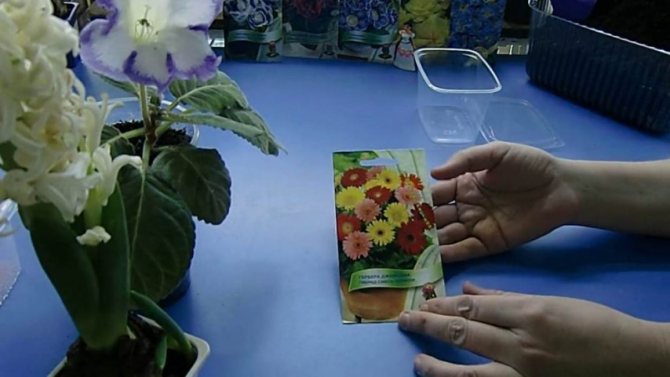

African exotic seeds
Read also: Geranium: description, types, home care, growing, reproduction, pruning and other useful information (50+ Photos & Videos) + Reviews
Seeds are not planted in open ground, but in boxes or tubs with loose soilconsisting of sod land, leaf humus, sand, perlite and peat.Before planting, the soil substrate must be sterilized: calcined over a fire or treated with steam in a water bath. Expanded clay is usually placed on the bottom of the box as drainage.
A week before the intended planting, the seeds are wrapped in gauze or clothsoaked in a weak solution of potassium permanganate. Then the gauze is carefully squeezed out and stored in polyethylene for 1-2 days. This method allows you to achieve seedlings faster.
Perennials grown from seeds begin to bloom 10–12 months after planting.
The landing order is as follows:
1Seeds are scattered over the surface of the soil, a small layer of fine river sand is poured on top.
2Water the sowing and cover with plastic wrap or glass. A box with seedlings is placed in a warm place with diffused lighting.
3 In the morning and in the evening, the shelter is removed so that condensation does not form.
4 If necessary, the soil is sprayed with water at room temperature.
5 After 10-12 days, when the first shoots appear, you need to switch to regular moderate watering. Since that time, the seedlings are no longer covered with a film.
6 Seedlings with a pair of leaves dive into a new box, planting them at a distance of 8–10 cm from each other.
7 A seedling with 6 leaves is ready for planting in the garden.
It is important to maintain good illumination of the seedlings - daylight hours are about 12 hours. With a short daylight hours in winter, artificial supplementary lighting with the help of fluorescent lamps is allowed.
The only disadvantage of the seed propagation method is that it does not guarantee the preservation of the characteristics of the mother bush.
back to menu ↑
See also: Anemones: 25 species, features of reproduction and care, planting in open ground, forcing in winter, a description of the medicinal properties of the plant (50+ Photos & Videos) + Reviews
Planting material
Gerberas can be planted in two ways - seedless and seedling. The first method involves sowing seeds immediately in the main place and subsequent care for them. The second method is planting seeds, growing seedlings and then transplanting them to a permanent place.
The seedling method is considered more reliable. This is explained by the fact that the probability of a strong flower germinating from young shoots is greater. Seeds planted outdoors need more reverent care, but sometimes, no matter how you look after the sowing, gerberas may not germinate. It is safer to grow seedlings from seeds at home, and then transplant them into large pots or a garden.
Preparatory stage
Gerbera seeds can be obtained in two ways: by purchasing them in a specialty store or by pollination of an adult flower. It is worth remembering that plants may not match the maternal type if they were grown from seeds harvested from an adult flower. That is, gerberas of the first and second generation will be different. To avoid surprises, it is best to purchase ready-made seed material in the store. A plant will grow from it, which will fully correspond to the characteristics of the selected variety.
During the purchase, it is imperative to pay attention to two points:
- packaging;
- date of receipt of seeds.
It should always be remembered that gerbera germination decreases for 100 days after harvesting the planting material. Flower seeds look like small oblong seeds with a brush at the tip. A suitable period for sowing seeds for seedlings is January-May. Plants with proper care will start flowering 6 months after planting. If the necessary care is not taken for the material, the flowering period of the plant is reached no earlier than 11-12 months after sowing. If professional care of gerberas is carried out in the greenhouse, taking into account all the rules (microclimate, powerful lighting, timely feeding), the plants will bloom 3-4 months after planting.
After the planting material is prepared, you should deal with the soil. The soil must be light and loose, since gerberas are unlikely to germinate in dense soil.
The soil should not be acidic: in a soil of high acidity, plants will certainly die. The PH of the soil should be between 5.0-5.5. Failure to comply with the specified framework will lead to the fact that the development of the gerbera root system will stop: the roots will simply rot. Only with ph 5.0-5.5 flowers will be able to receive from the soil the amount of moisture and nutrients necessary for their development.
For planting seeds, you can use a special mixture. You can simply buy it or make it yourself. The second option is quite simple: you just need to mix the right ingredients in the correct proportion. You should take coarse sand, peat and leaf humus and combine in a ratio of 1: 2: 2, respectively. The resulting composition can be supplemented with pine bark. The disinfection procedure for the self-prepared mixture is mandatory. To do this, you need a hot solution of potassium permanganate, which should be poured over the soil. This must be done at least 2 hours before sowing seeds in the soil.
Sowing seeds
For planting, you will need a wide container with drainage holes. Expanded clay should be laid out at the bottom of the container, and then the treated soil should be poured. There is no need to tamp the ground. It is recommended to slightly moisten the soil by spraying immediately before sowing. Seeds are laid out in rows on the ground at a distance of 1.5-2 centimeters from each other. The planting material can be tied down with a thin layer of soil, or you can not. Florists claim that seeds that are not covered with soil germinate faster than those that are under a layer of earth. The container with crops should be covered with foil or glass. Thanks to this, the sprouts will hatch faster. It is important to remove the film or glass every day to supply oxygen to the seedlings.
The container with crops must be left in a shaded place. The required temperature regime should be adhered to: the room should have a minimum of 21 degrees of heat and a maximum of 24 degrees. There is no need to water the seeds, since they must germinate in the greenhouse, and in this case the water almost does not evaporate and the soil remains constantly moist.
The first shoots will appear on the 7-10th day. After that, you don't need a greenhouse, so the glass or plastic wrap can be removed. Next, the box with seedlings should be transferred to a warm place that will be well lit. In this case, it is impossible that direct sunlight falls on the seedlings. Watering the seedlings is necessary when the topsoil dries up. Watering should be carried out at the root of the plants. It is recommended to use a regular syringe, because this will definitely not harm the escape.
Seedling picking
Gerbera seedlings must be dived when a second rosette of leaves appears on young seedlings. It is necessary to choose the right containers: these can be plastic glasses, pots and any other containers, but it is very important that they have a volume of at least 100 grams. Each container should have drainage holes, and expanded clay at the bottom. For picking, the same soil is used that was taken for sowing seeds. A mixture of peat, leaf humus and sand will be an ideal option for the plant's root system to develop normally in the ground.
Gerbera roots are very delicate, so you should be very careful with seedlings. You need to gently dig out the shoot with a lump of earth with a small garden spatula and transplant it into a pot or glass.
After picking, the seedlings require proper care. Gerbera shoots are left in a room with a temperature regime of 19-23 degrees Celsius. The air humidity should be high. Watering is carried out in moderation, as needed: gerberas do not need a lot of water. The pots or cups can be placed in plastic bags to maintain the humidity level. As for the light, the place should be well lit, but without direct sunlight.You can use artificial lighting (the optimal lighting time in this way is 12-14 hours). You can get rid of the greenhouse when the third rosette of leaves grows on the shoots. It is not recommended to feed seedlings. When there are already 4-5 leaves on the plants, you can proceed to transplanting gerberas to a permanent place - on the street or in pots.
Plant transplant
When transplanting a plant, you need to ensure that the root collar of the flower is not covered with soil.... In this state, the shrub will not take root in a new place and, most likely, will die due to rot.
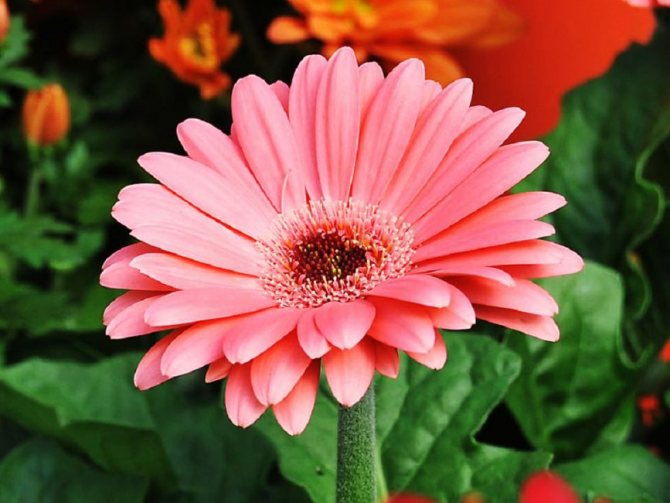

Pink gerbera
See also: Dahlias: a description of the 10 most beautiful varieties, planting and care (100 Photos & Videos) + Reviews
Repotting is a great way to rejuvenate an adult plant. At the time of transplantation, an adult bush can be divided into several small ones. For this, the rhizome of the dug plant is cleaned of soil, carefully divided with a disinfected blade or a sharp knife into 2 parts.
The cut is treated with powdered charcoal or ash, and until it begins to dry out, the seedlings are planted in a new place and watered abundantly.
If for some reason plant transplantation is undesirable, then it is initially planted in a convenient container, tub or container, which can be moved around the site and brought into the room for wintering.
back to menu ↑
See also: Azalea - description, care, reproduction and possible diseases (35 Photos & Videos) - We comply with the cultivation technique
How to plant seedlings correctly
It is recommended to plant seeds for seedlings in January or March. To do this, follow these steps:
- Make a substrate. It is made up of turf, leafy soil, humus, which are mixed in a 2: 1: 1 ratio. Sand is also added to the composition.
- The seeds are deepened into the ground by 0.2-0.3 centimeters. The first shoots appear in 2 weeks.
- When 2-3 true leaves appear, the seedlings are transplanted into boxes. With 4-5 leaves, the sprouts are moved into separate containers.
Gerbera blooms begin 10-11 months after planting. The resulting plants may lose the characteristics of the mother crops.
Features of care during flowering
The stem of the flower is not cut, like in other decorative flowers, but twisted or broken... Since the flowering period of the shrub is quite long - 2-3 months, care during this period needs to be strengthened.
In addition to abundant watering and frequent feeding, it is recommended to remove dried flower stalks by cutting them as close as possible to the base of the outlet.
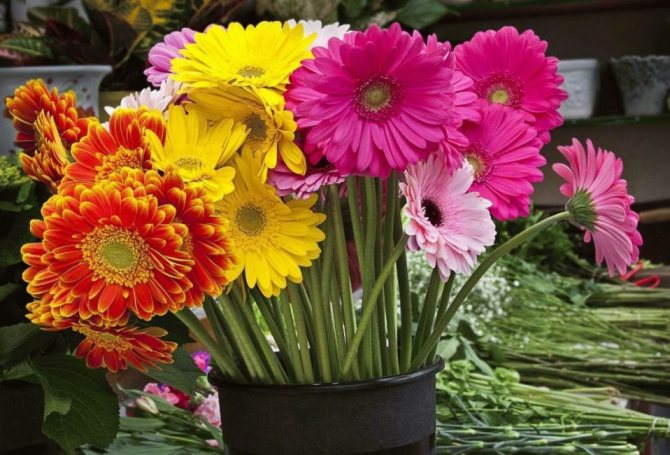

Varietal variety of a flower
It is better not to cut flowers for bouquets, but to twist the leaves out of the rosette or carefully break them off.
This method will allow you to achieve the appearance of new large buds and enhance flowering.... If pruning is not carried out, the remainder of the stem will rot, and the rot can spread to the roots.
It is also necessary to remove dry foliage in a timely manner. - it signals the presence of a disease in gerbera and can contribute to the infection of other plants. Another important nuance in the care during flowering is the need to irrigate the leaves to remove dust and dirt.
back to menu ↑
See also: Badan: description, types and varieties, planting and care in the open field, medicinal properties and contraindications (60+ Photos & Videos) + Reviews
Similar perennial flowers in the garden
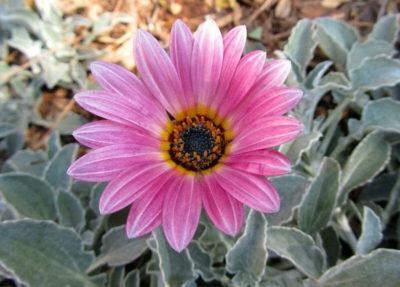

There are flowers in nature that are similar to gerberas.:
- chamomile;
- calendula;
- daisy;
- arctotis with its chamomile-like inflorescences;
- gatsaniya;
- osteospermum.
Chrysanthemum is also very similar, it has smaller flowers. There is a certain similarity between gerbera and decorative sunflower.
Winter care
In the southern regions, where winters are warm and humid, the plant waits out a state of dormancy with a protective shelter in the form of spruce branches, straw or sawdust.
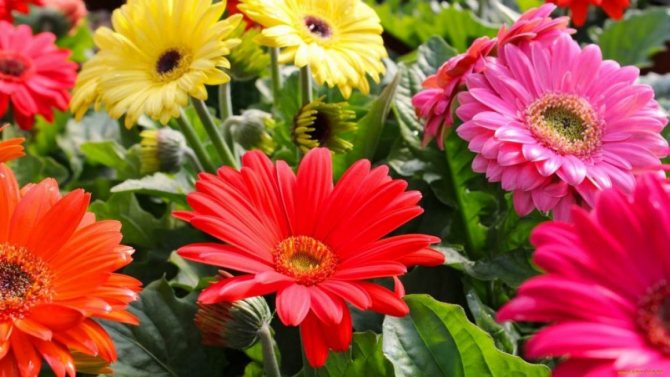

Blooming gerberas
In the central regions of Russia, the gerbera should be dug up in the fall like an annual and stored in a cool dry place, without clearing the roots from the ground.... Together with the earthy clod, the plant is placed in a wooden box filled with sawdust and stored in a dry basement.
Breeders have already developed hybrid varieties that can withstand temperatures up to -10 degrees, but in Siberia and central Russia they still have to be dug up for the winter.
In central Russia, digging is also required: temperatures in these areas in winter are too low for the plant to survive. The flower is transplanted into pots and brought in for the winter in a room where the temperature does not drop below +7 - +8 degrees.
back to menu ↑
See also: Barberry: description, types and varieties, planting in open ground, care, features for different climatic conditions including Siberia (65 Photos & Videos) + Reviews
Flower care
For flowers to grow strong and healthy, you need to take proper care of them. There is a difference between plants grown in the garden and at home, but there are rules that are common to all gerberas.
The most important and mandatory ones are:
- Lighting of the place. Scattered sunlight should fall on the windowsill or table, cabinet, where the pots with gerberas stand. The place should be well lit. Adult flowers are not afraid of direct sunlight, but it's better not to experiment anyway. In the warm season, gerberas must be taken out onto the balcony or outside so that they are ventilated and saturated with street oxygen.
- Temperature conditions. Gerberas are tropical plants that tolerate heat, but absolutely do not tolerate cold. The most comfortable room temperature is 20-25 degrees above zero. When the flower is in a state of natural dormancy, it is better to transfer it to a cooler place, but the temperature there should not fall below 14 degrees above zero.
- Watering. Gerberas love moisture, but they need to be watered, focusing on the condition of the soil. The ground should not be too dry. A slightly damp soil surface is what you need. Gerberas should be watered only with water that has settled. It should be at room temperature, but not cold. Cold water negatively affects the roots and stem of the plant. Watering can be done from the top or through the pallet. If you irrigate with the top method, a watering can without a spray nozzle is useful. Watering should be done around the perimeter so that liquid does not enter the root outlet. If you choose the pallet method, then you need to pour water into the container, put the pot for 30 minutes, and then get rid of the remaining liquid in the pallet.
- Spraying. Growing plants involves spraying regularly both in winter and during persistent heat. If the air is too dry, gerberas will stop growing and stop developing. During spraying, you also need to be careful: only the leaves and the stem should be moistened, avoiding water getting into the root outlet and on the buds.
- Top dressing. Gerberas do not need organic matter. Humus and organic fertilizers from chemical production are not at all what flowers need. Plants need fertilizers containing minerals, so complex preparations are very useful. Fertilizers should be applied at intervals of 10 days or once a week. During flowering, gerberas are in great need of additional nutrition in order for the flowers to be strong. If the growing season begins in early spring, it is recommended to use fertilizers that contain a lot of nitrogen. In other flowering periods, fertilizers with a high concentration of potassium and phosphorus will be more necessary.
- Weeding. This only applies to gerberas planted outdoors. The flower bed should be weeded and plucked regularly to get rid of weeds. Weeds take nutrients from the soil that are necessary for the normal development of gerbera. You can get rid of the grass manually or using chemicals.It is imperative to choose purchased selective action products that will be aimed at destroying only weeds. Such preparations are harmless to flowers. To avoid weeds, you can mulch the soil around the flowers, for example with sawdust.
- Pruning. The procedure is performed when the plants begin their flowering period. It is imperative to carry out sanitary cleaning. They involve the elimination of dry leaves and wilted stems. Experienced gardeners advise cutting off excess leaves in the outlet as this will stimulate the growth of new flowers.
Following these rules will ensure the growth and proper development of flowers. They will grow strong and healthy only if these recommendations are followed.
Diseases and pests
The capricious gerbera is susceptible to fungal diseases and putrefactive lesions. The most dangerous disease for a perennial is rotting of the root collar, which is caused by fungi.
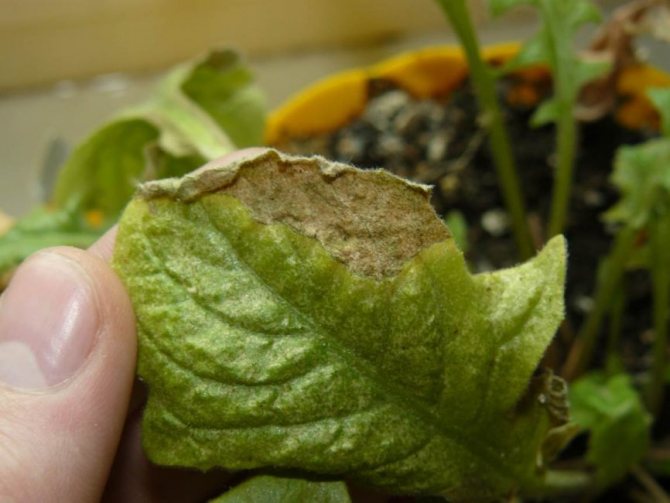

Gray rot on the plant
However, excessive watering or moisture ingress into the outlet can also provoke plant pathology.... Problems can be avoided by regular soil drainage. If it is not possible to save the affected plant, then it must be dug up and burned so that the disease does not spread to neighboring shrubs.
Gray rot is also dangerous for gerbera, which can be recognized by the characteristic brown spots on the leaves, gray fluffy bloom. First, it leads to decay of the foliage, and if untreated, the roots of the flower. They fight the disease with the help of fungicide preparations Teldor, Gamair, Skor and Discor emulsions.
The defeat of Fusarium is determined by the characteristic features: weakening of the plant, the appearance of brown spots and drying of the leaves on one side.
In the summer, perennials are susceptible to powdery mildew infection., which also occurs due to a lack of calcium in the soil, an excess of mineral fertilizers. On flowers and ornamental plants, dew is destroyed with the preparations Topaz, Chistotsvet, Skor.
Insect pests are eliminated using insecticide chemicals.
The main pests of gerbera, due to which the flower turns yellow and withers:
- spider mites (Aktellik, Neoron, Fitoverm)
- thrips (Regent, Pegasus)
- whitefly (Fufanon, Agrovertin)
- slobbering penny (Pyrethrum, Karbofos)
- aphid (Aktara, Fas, Confidor)
- slugs (collected and destroyed by hand)
back to menu ↑
See also: Euonymus: Description of the plant, species and varieties, cultivation, planting in the open ground and care, reproduction (65+ Photos & Videos) + Reviews
Disease and Insect Pest Control
Gerbera is very resistant to diseases and pests, but with improper care it is sometimes affected by diseases:
- Powdery mildew is a rapidly spreading fungal disease. First, a white bloom appears, similar to a powder, after a short period of time the bloom is noticeable on the peduncles, stems, which gradually turn yellow, and young leaves appear twisted, the bush dies over time.
- Fusarium is a dangerous fungal disease that enters the plant through cuts and wounds. In young plants, the root system is affected in the form of decay, the leaves lose color and gradually turn yellow. High humidity in the room and excessive watering provoke the appearance of the disease.
- Various types of root rot - the disease begins with a slow decay of the bottom of the root, which usually leads to the death of the entire perennial.
The main prevention of all diseases is considered to be regular ventilation of the room, adherence to the watering rate, good drainage of the pot and loosening of the earthen coma as a crust appears on its surface.
When the first signs of damage appear, drugs such as Fundazol are used.
Of the parasites, tick and aphid colonies are more common. Small insects are difficult to detect immediately with the naked eye, but they spread quickly and cause great harm to the flower.Therefore, it is necessary to immediately apply measures, use special drugs and folk remedies.
Possible growing problems
Growing a gerbera in a summer cottage, a gardener may face a number of problems. Knowing the reason for the difficulties with the growth and flowering of perennials, it is easy to find solutions.
| Problem | Possible reasons |
| Gerbera does not bloom | Excess nitrogen, too long daylight hours, violation of wintering conditions, few leaves in the outlet |
| The plant dries, turns yellow, withers | Excess or lack of moisture, lack of minerals in the soil, Fusarium infection, leaf pores are clogged with dust and dirt |
| Buds wither | Little light, sharp temperature drop |
| Leaves turn black | Cold water for irrigation, excessive moisture or, conversely, drought, low air temperature |
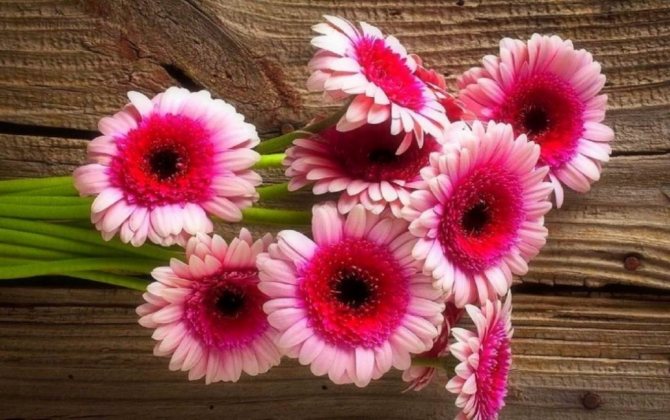

Bouquet of gerberas
When planting gerbera seedlings in an open flower garden, you need to avoid common mistakes in agricultural technology:
- irrigation with cold, unstable water
- fertilizers with organic or chloride fertilizers
- closing the root collar with soil during a dive
- landing in a shady, swampy place
back to menu ↑
See also: Gazebos with barbecue and barbecue - (80+ PHOTOS) Drawings of projects that you can implement yourself
What to do if indoor gerbera withers
When growing indoor gerbera, flower growers often face problems such as wilting of foliage.
The main reasons for this phenomenon may be:
- lack of moisture, it is very easy to determine this: if after watering the turgor increased, the leaves rose within an hour, then they did not have enough watering.
- the presence of peat in the potting mixture, it absorbs liquid and does not give it to the plant;
- excess liquid - after transplanting into a large container, the problem of excessive watering often arises, since the root system does not have time to occupy the entire area of the pot at once, and the soil mixture becomes acidic, and decay processes occur.
Perennial species
Scientists distinguish about 80 species of garden gerbera... The most popular of them are collected in the table.
| Species name | Characteristics |
| Green-leaved (ordinary) | A distinctive feature is the narrow leaves and petals of the flower. The inflorescences are usually pale pink in color. |
| Gerbera Wright | Has a prolonged flowering period: from spring to the first cold weather. The flowers are marginal, have a white-pink color. |
| Gerbera Jameson | More attributed to indoor varieties, very capricious in care when planting in open ground. It has short stems, a large flower diameter. |
| Abyssinian | Homeland - Ethiopia, outwardly (in the shape of the inflorescence and color) very much resembles a chamomile. The stem can grow up to 50 cm in height. |
| Mini | The dwarf variety, a miniature plant no more than 25–30 cm high, helps purify the air. Inflorescences can be orange or yellow. |
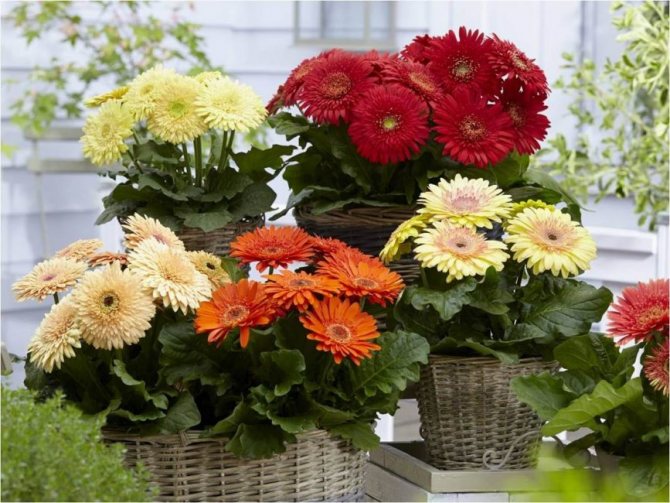

Different types of flower
To create bouquets, Wright's gerbera is most often used - it stands in water for a long time and has outstanding decorative qualities.
back to menu ↑
See also: Bobovnik - "golden rain" in your garden: planting in the open field, care, possible diseases, use in landscape design (55 Photos & Videos) + Reviews
Varieties
There are quite a few types of garden gerbera, each of which has certain characteristics.
Wright
This crop is best grown in greenhouses. The plant is considered to be very whimsical. It needs full ventilation and systematic feeding.
Jameson
In height, this variety of gerberas reaches 60 centimeters. Flowering lasts from August to November. The culture is characterized by a variety of colors.
Green-leaved
This gerbera is considered the ancestor of the rest of the species.


Abyssinian
The plant is characterized by not too large white flowers. Sometimes they are distinguished by a reddish tint.
Ambigua
It is a white gerbera with excellent decorative characteristics.
Ferruginea
It is a red variety that is popular with many gardeners.
Anandria
Another popular plant species that is grown by many growers.
Plant varieties
The varietal diversity of the plant is also extensive, most often varieties are obtained by crossing African species: Jameson's gerbera and green-leaved.
There are varieties with:
1Small flowers and narrow leaves (Alcor, Aldebaran).
2Wide flowers and narrow leaves (Vega, Migar, Algol).
3Large flowers with medium petals (Mars).
4Large flowers and wide petals (Peter, Delios, Romeo).
5 Narrow double and semi-double petals (Sonya, Kalinka).
6 Wide double and semi-double petals (Spark).
You can choose a perennial for a flower garden based on the color of a plant of a certain variety.... The brightest colors and the corresponding gerbera cultivars for the convenience of gardeners are collected in the table.
| Color | Gerbera variety |
| Red | Mars, Spark, Romeo, Alamak, Algol |
| Pink | Aldebaran, Miga, Viola, Vera |
| Lilac | Amber, Terra Paradis |
| Yellow | Vega, Jupiter, Kalinka |
| White | Lobilosa, Maria, Symphony |
| Multicolored color | Festival mini, Rays |
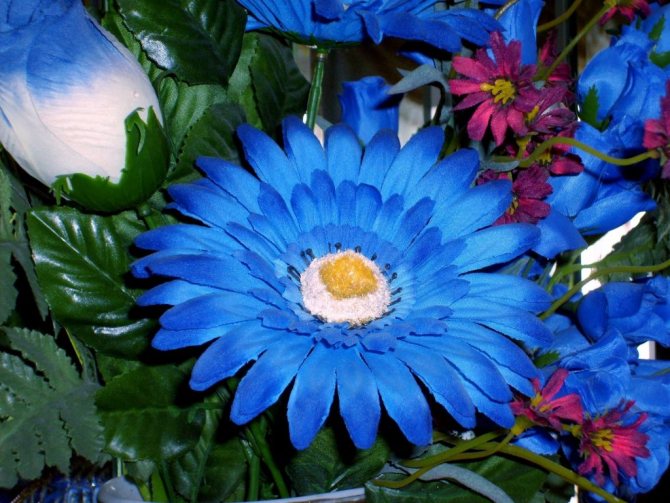

Blue gerbera
The only color that is not characteristic of gerbera flowers in nature is blue.
back to menu ↑
See also: Canna - a large ornamental plant: description, planting and care in the open field and at home (70+ Photos & Videos) + Reviews
Description
Gerberas are herbaceous plants that have a strong, bright green stem and large, bright flowers. They can be of different shades: yellow, and red, and pink, and white gerberas look beautiful. The exception is blue flowers: there are no such gerberas in nature. The plant is grown both in the garden in the country and at home in pots. Gerberas are thermophilic, and this is their main feature. Otherwise, they are not overly demanding. However, there are still rules for planting at home and on the street, which you should adhere to in order to grow beautiful indoor or garden flowers.
Application in landscape design
Due to their long flowering period and attractive appearance, gerberas are often used to decorate household plots. Shrubs look great as borders and borders for flower beds.
The plant is versatile and is combined with almost any plant, it becomes an excellent center of the flower arrangement.
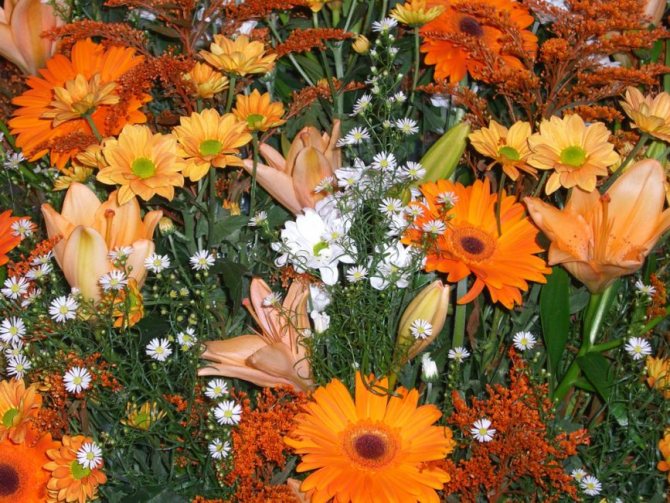

Gerberas in the flowerbed
Given the African origin of the perennial and the peculiarities of its care, you should not try to plant a flower in city flower beds and in parks - most likely, the plant will quickly die there.
Despite the fact that a native of Africa (gerbera) is a capricious plant, it is quite possible to grow beautiful flowers in a temperate climate. It is necessary to strictly observe the basic techniques of agricultural technology and closely monitor the condition of the perennial.
If you make an effort and have patience, then bright large transvaal daisies will become a real decoration of the personal plot and the pride of a gardener.
Information on how to properly grow gerbera seedlings for subsequent planting in the garden, as well as tips and nuances of flower care, are collected in a short training video:
See also: Garlic - an acute neighbor with a permanent residence permit: description, planting and care in the open field, recommendations, possible diseases (25 Photos & Videos) + Reviews
VIDEO: Gerbera Jameson planting and care
Garden gerbera: description, species and varieties, planting and caring for an African flower in the open field, reproduction, possible diseases (40+ Photos & Videos)
Description and features of the plant
This is a delicate and beautiful culture that decorates the flower garden with bright colors. At the same time, it is important to provide the flower with comprehensive care. Gerbera belongs to the Asteraceae family. Its flowers are collected in the center of the rosette and are one whole. They can be of different sizes. But most often they are 10-12 centimeters in diameter.
Plants are short and tall. Some specimens reach 1 meter in height. At the same time, flowers are most often cultivated in the garden of no more than 30 centimeters. Gerberas have a long flowering period that lasts about a month.
What does a garden gerbera look like?
The decorative street gerbera is a representative of the Astrov family and has a powerful root system. It comes from African countries, like garcinia and gardenia. The plant has a shortened stem and a compact bush. In the root zone, there is a rosette of light green leaves.
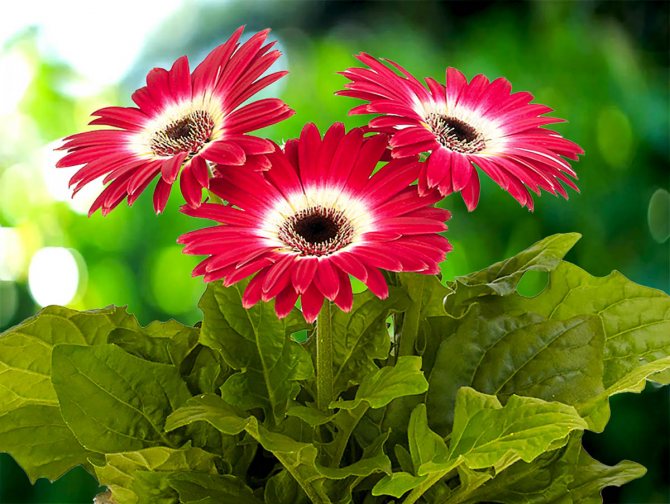

Outwardly, the gerbera resembles a daisy or a large chamomile.
The flowers are single, large. The heart of the baskets is light or yellowish-green. Gardeners often compare gerberas with chamomiles or echinacea. However, unlike the last two plants, they have a wider color gamut. There are not only ordinary, but also terry, semi-double species.
Attention! Under natural conditions, gerbera will never have a blue color.
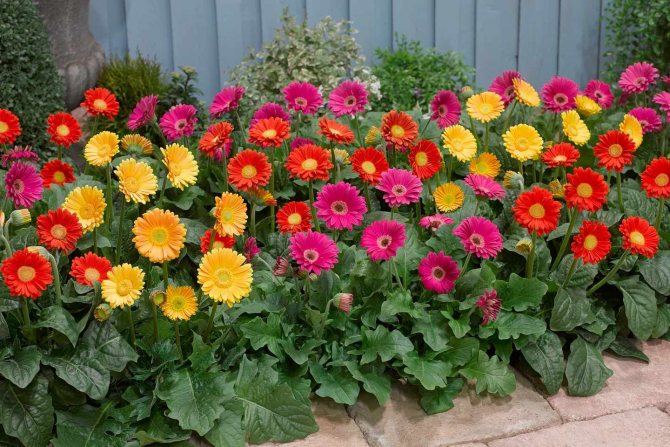

Breeders are constantly working on the development of new varieties and hybrids.
In total, over 80 species of this flower are known today, but gardeners prefer hybrids and varieties with high decorative qualities. At the same time, they are grown not only in the garden, but also in indoor conditions. Breeders have already bred more than a thousand varieties, based on the green-leaved and Jamson's gerbera. Most of all, flower growers loved:
- Romeo;
- Mars;
- Alcor;
- Parade;
- Elegans;
- Vincent;
- Migar;
- Jupiter, etc.
How to grow seedlings?
If you want to grow a houseplant, you can do it at any time of the year that suits you. But if you want a garden gerbera, the seeds are planted in March. First, you need to prepare the soil and special containers for seedlings. The earth for it is pretreated with a hot solution of potassium permanganate. After that, seeds are sown into the moist soil and sprinkled on top with peat or forest soil, the layer of which should be no more than 0.5 cm.
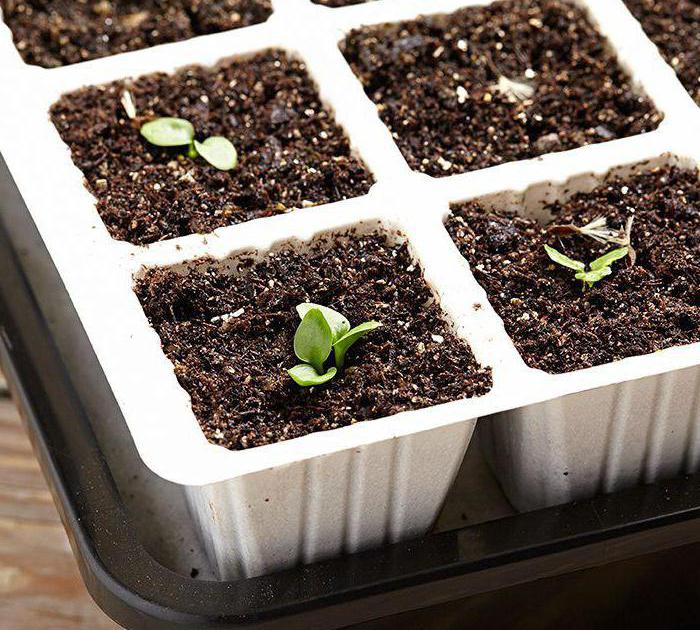

After that, the box with the seedlings is covered with glass or plastic wrap. Every day it is necessary to open the sowing and check the moisture content of the soil. On the tenth day, you will see the first shoots. During this period, the seedlings will need good lighting, but in such a way that direct sunlight does not fall on it.
In winter, when daylight hours are very short, provide young plants with additional lighting using fluorescent lamps. The duration of daylight hours should be at least twelve hours. When the first three or four leaves appear, the seedlings dive. Each plant is placed in a separate pot. They should not be too deep.
When growing seedlings indoors, there should be a constant air temperature of about +20 ° C. Many gardeners recommend using peat pots when growing seedlings. In this case, the roots of the young plant will not be damaged when it is planted in the ground along with the pot. Thus, the plant adapts faster.
Purchased garden gerbera - planting and care
Florists do not recommend planting seedlings of this plant at once in a permanent place or simply replanting it in a new container. The bush must be given the opportunity to adapt to new conditions for him. This usually takes up to 2 weeks.
Then a fairly spacious unglazed ceramic pot is taken (such a container will allow the roots to "breathe"), washed well with soap for disinfection and filled from below with expanded clay or other loose material for drainage. When transferring a plant, you need to try to preserve the earthen lump as much as possible, and fill the remaining space with a nutritious substrate. Do not bush the bush into the substrate! The socket should be 1.5-2 cm above ground level.
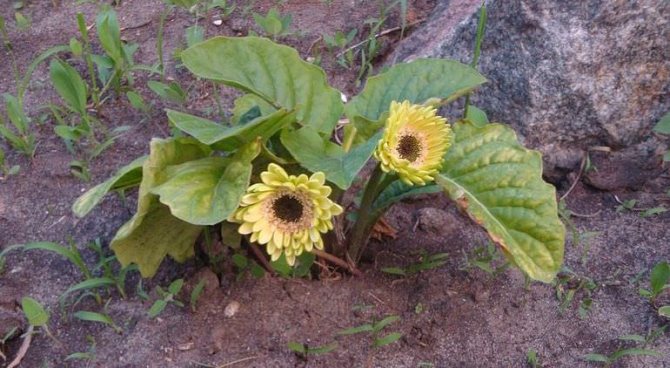

If you bought a flowering gerbera bush, all the buds must be removed before transplanting.
It should be remembered that the gerbera is a guest in our latitudes, accustomed to a warm and mild climate. The fact that the growing conditions do not meet its requirements can be determined already at the stage of growing seedlings. She becomes weak, elongated and even affected by rot and other diseases. If the seedlings do not feel well, the reason for this may be a lack of light, watering with cold water at high air temperatures, waterlogging and other violations of the rules described above.
Care
Many gardeners like the garden gerbera. How to care for her so that the bushes delight with large and bright flowers? This plant, which today is not only to the liking of amateur gardeners, it is massively grown on an industrial scale. Someone considers him a little capricious, but competent care and a florist's desire to decorate his site allow you to grow magnificent specimens.
We will start from the fact that the seedlings have already been grown and planted in open ground. Therefore, we will focus on the basic rules for caring for an adult plant.
How to prolong flowering in a bouquet
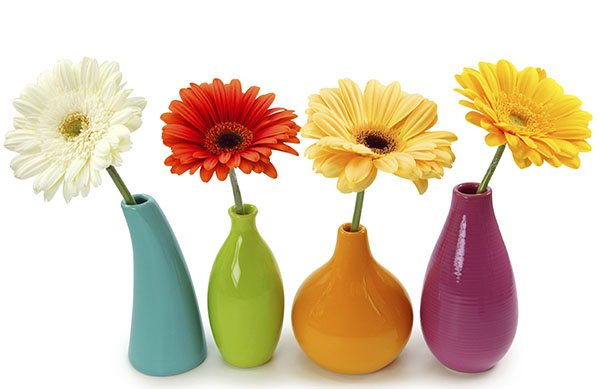

Having received a luxurious multi-colored bouquet as a gift, you probably wondered how to keep gerberas in a vase longer. In fact, cut gerbera is not capricious and phenomenally tenacious. Flowers can come to life, even if you had to walk with a bouquet all day.
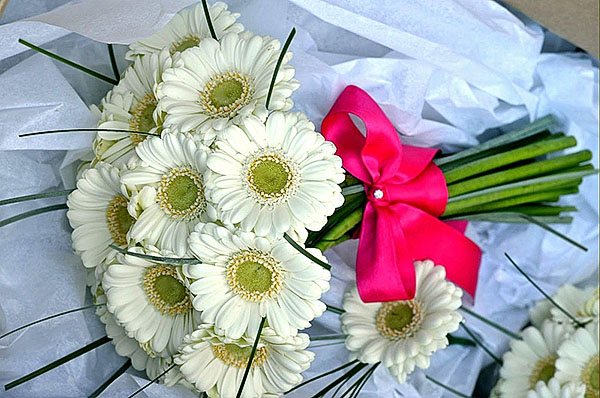

That is why they like to give gerbera compositions to brides - flowers will not lose their will to live for the whole day and will come to life before our eyes if you put the ends of the stems in water and support heavy heads. For such a procedure, a lattice is suitable, through the cells of which the stems are passed.
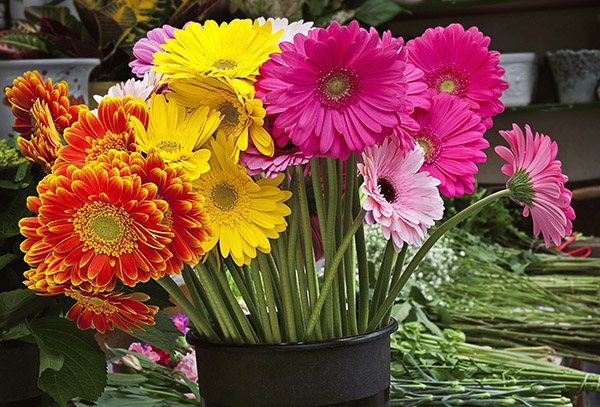

To keep the bouquet in a vase, use the following guidelines:
Flower crops similar to this plant
- First of all it is chamomile... Chamomile and most of the flora similar to them belong to the Aster family. The first sign by which we can easily distinguish them is white petals.
- Anemone Blenda has a variety of flower shades.
- Calendula - similar to a gerbera with a height of 0.5-0.6 meters. Possessing orange or rich yellow petals.
- Daisy - has a color of white, pink, lilac flowers, and the middle is pale yellow. A neat bush reaches no more than 20 cm.
- Arctotis - has chamomile-like inflorescences 5-10 cm in size on a bare stem. Petals are white and also pale yellow.
- Gatsania - can grow up to 30 cm, and have an inflorescence in the region of 5-9 centimeters. The color scheme is diverse, but pink and scarlet varieties of gazinia are popular.
- Osteospermum - a perennial, but its cultivated varieties are grown as annuals. It takes the form of an average bush about a meter in height and the size of the inflorescence is about 4-10 centimeters. It is characterized by white, red, purple petals.
- Sunflowers decorative ones are miniature, with double and dense inflorescences, multi-colored depending on the variety.
- Chrysanthemum - very similar to gerbera, differs in the size of flowers, they are much smaller. Chrysanthemum petals can have a wide variety of shades, from white to purple.
Other garden flowers similar to gerbera include:
- Ursinia.
- Echinacea
- Erigeron.
Choosing a pot
Your beauty has grown from a seedling state, it already has several real leaves. It's time to think about transplanting into a separate pot. It should not be too large, otherwise you may not wait for flowering. At the initial stage, a container with a volume of 700-800 ml is suitable.
Gerbera feels best in a clay pot. Be sure to lay a layer of drainage material on the bottom.
However, the advantage of plastic dishes is the possibility of the most optimal watering method - through the pallet.
Temperature and humidity
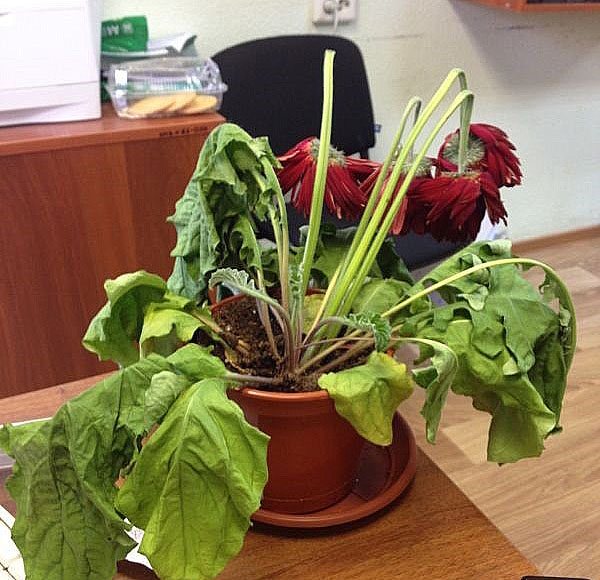

Competent care of a room gerbera also includes compliance with temperature limits.Although it is a fairly hardy plant, it should not be overused. Having entered the dormant period, the transvaal chamomile (another name for the flowerpot) may stop blooming altogether. The optimal conditions for its cultivation are as follows:
- in winter not less than 11-14 ° С;
- in the warm season from 20 to 25 ° С;
- limit the possibility of frequent temperature changes;
- provide relatively high humidity.
It is not recommended to keep the plant on the balcony in winter. Dampness and cold make the gerbera drowsy. Over time, she may die millet.
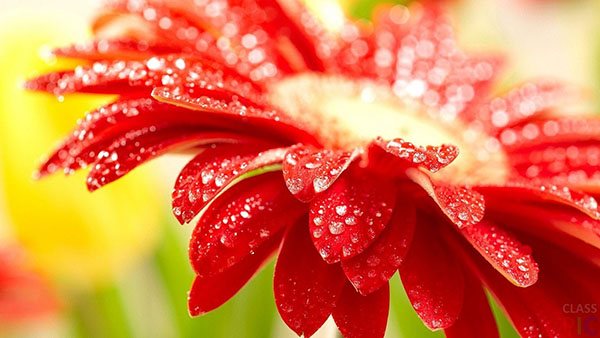

The homeland of this flower is Africa (Madagascar Island), as well as Asia. In this regard, it is important to consider that there is a tropical climate in those parts. Therefore, it is best for an indoor gerbera flower to create natural living conditions.
Value
What do gerberas mean?
- Good luck if yellow and orange are going to be in a bouquet;
- Joy, smile - with a combination of bright inflorescences;
- Love, devotion to a beloved woman - deep red;
- Wishes of happiness and warmth - shades of red, diluted with yellow;
- Respect for a man, if maroon is chosen;
- Good mood - bouquets of flowers that are contrasting in tone.
Gerbera also personifies mystery. It can be presented if you want to flirt with a woman, but in this case, you should choose buds with gentle transitions, for example, from white to pink or from pink to red, scarlet.
How to transplant a gerbera after purchase
When purchasing a gerbera in a pot, remember that moving it from the greenhouse to the apartment is already stressful for the flower and therefore postpone the transplant. It is worth waiting for the adaptation to take place, it usually takes a couple of weeks. A gerbera transplant has its own nuances; you cannot transplant during the flowering period - this knocks down the biorhythms of the flower. When replanting, choose a pot with a diameter of 3 cm larger than the past. Prepare light soil. We advise you to plant in such a soil: two shares of leafy soil, a share of peat, a share of sand. Do not use compost and humus - they harm this plant.
Photo
Below you can see photos of the gerbera and its seeds.
We dive gerbera seedlings
Gerberas dive when young seedlings produce a second rosette of leaves. All professionals say this. For this, pots, plastic cups or any other containers with a volume of 100 g are used. Drainage holes are necessarily made in their bottom. Expanded clay is laid at the bottom. The soil is used the same as for planting seeds.
I had a slightly different situation. My first shoots of gerberas from seeds did not have time to give a second rosette of real leaves, but I still made a pick. Why? Because there was very little soil in the greenhouse (let me remind you that for the first time I poured a layer of soil 3 cm high into the greenhouse. This turned out to be not enough). As a result, the seedling roots began to intertwine and interfere with each other.
Let me remind you that the gerbera has a very delicate root system. Any manipulation with it has a bad effect on the health of the plant as a whole. After picking, gerbera seedlings need mild conditions. This is a temperature of + 19 ... + 23 degrees, moderate watering and high humidity, a proper level of illumination. So, I carried out the picking of the gerbera on February 26 (planting the seeds was carried out on February 2). For picking, I took 200 ml cups. The soil was poured a little less than half (the amount of soil should be commensurate with the size of the root system). Why take a large plastic cup and fill it halfway with soil? After all, you can take a small container for picking. The answer is simple. After a pick, gerberas need increased air humidity. By covering the glass with gerbera film, you can create a mini wig for the plant.
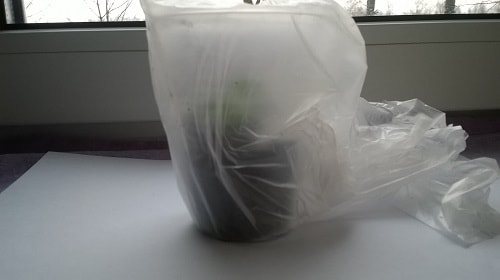

After picking, cover the cups with gerbera foil and put them on the window. I have these windows on the east side of the apartment, where the sun shines until 15.00. After sunset, I turned on the artificial lighting. I have a phytolamp.She shone until 22.00 every day. Watering was carried out rarely, since moisture evaporates slowly in the greenhouse.
After a pick, gerberas need gentle care conditions. This is a temperature of + 19 ... + 23 degrees, a high level of air humidity (a mini-greenhouse is needed), artificial lighting for 12-14 hours, moderate watering.
A month later, that is, on March 29, my gerberas grew somewhat. Some did not survive the pick, although the conditions of the plants were the same. Based on my observations, I made a conclusion. It is necessary to disturb the roots of the gerbera as little as possible and to carry out the first pick even when the gerbera has accumulated a sufficient volume of green mass (from 4 real leaves).
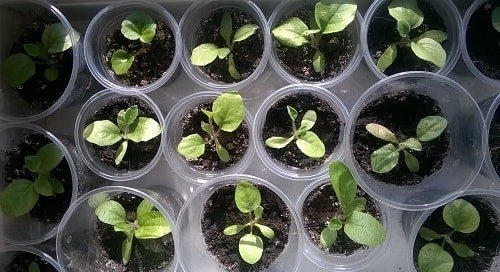

The seedlings were taken care of as follows: the greenhouse was removed when the third rosette of leaves had grown enough. The temperature of the content was kept at the level of + 19 ... + 23 degrees. Watering as the soil dries up, no fertilizing was carried out.
Read the continuation of the article on growing Jameson's gerbera from seeds at home. Second planting, personal experience, growing problems and their practical solution.
Basic landing requirements
- A garden gerbera needs warmth and moisture.
- The flower is very fond of well-lit areas.
- Gerbera garden watering prefers moderate, excessive moisture and waterlogged soil should be avoided.
Gerbera soil must contain:
- phosphorus;
- nitrogen;
- magnesium;
- potassium;
- manganese.
When preparing the soil, if possible, use forest soil that is rich in organic matter. It must be well drained, since the plant cannot tolerate even the slightest stagnation of moisture.
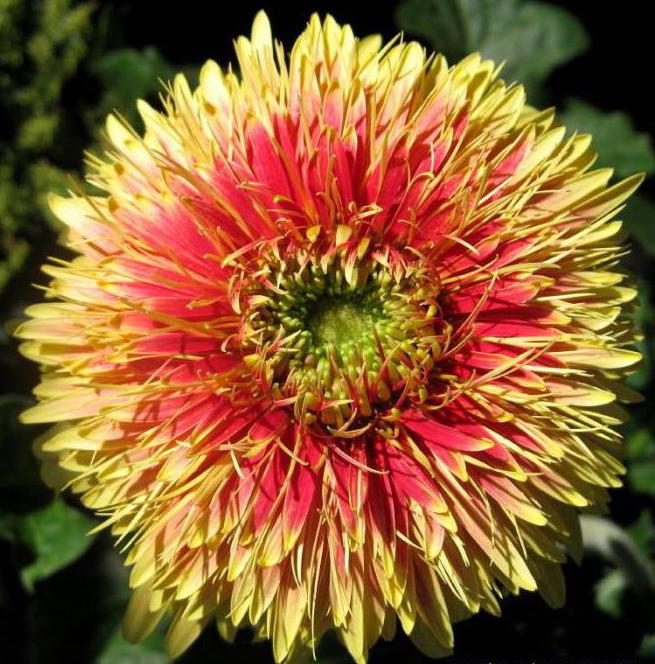

Herbrere classification
This plant is very popular in the world, and breeders in different countries are constantly working to create new, more original varieties, of which there are already more than a thousand today. They all differ in color, shape and size of flowers, which can be of any color, except only blue.
The overwhelming number of varieties are bred from two types - the Jameson gerbera and the green-leaved gerbera. In industrial floriculture, perennial garden gerbera is divided into several groups:
- small-flowered - with inflorescences up to ten centimeters in diameter and small-petal baskets;
- narrow-petaled large-flowered - plants with ligulate flowers and petals three millimeters wide and fifty millimeters long;
- broad-flowered large-flowered - petals of these flowers up to twelve millimeters wide and about fifty millimeters long;
- semi-double - ligulate central petals in the inflorescence are noticeably shorter, they form a separate corolla;
- terry - this group has petals that are shorter towards the center, they fill the entire inflorescence.
If you want to grow a gerbera flower at home, then pay attention to the dwarf varieties that do not exceed twenty-five centimeters in height - Hummingbird, Happipot, Parade and Durora mix.
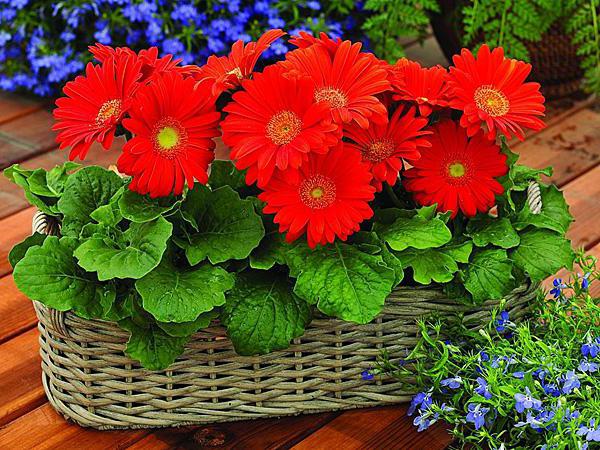

Where to place the gerbera in the room
The main factor for the comfortable well-being of gerberas is good illumination. Therefore, a suitable place for it is a room with a bright, but diffused light. The duration of gerbera bloom depends on the length of daylight hours. To organize additional lighting for the plant, you can use a phytolamp. The room in which the plant is located must be often ventilated, while avoiding drafts. In summer, the gerbera can be transferred to the balcony or garden. In the second case, it would be best to place the flower under a spreading tree, protecting it from direct sunlight. If a gerbera has just been brought from a nursery or store, you need to carefully examine it for pest infestation and isolate it from other plants in the house for the time of adaptation (about a week).
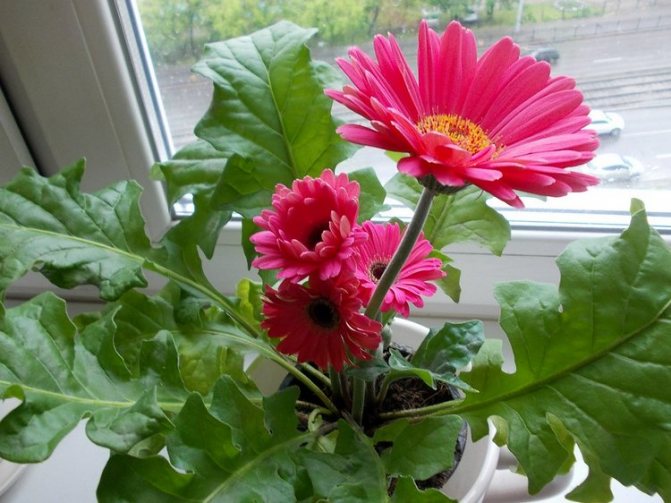

Description of the plant
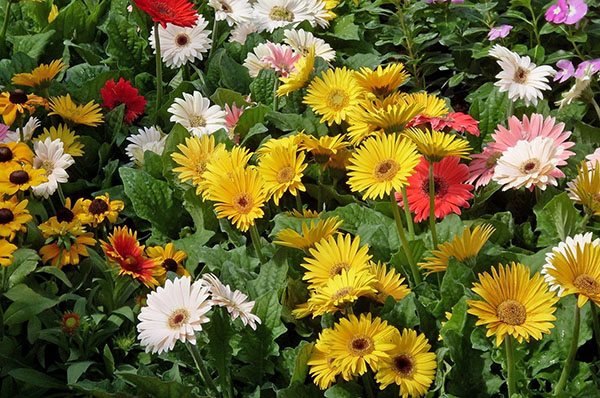

Gerbera belongs to the genus of perennial grasses from the Astrov family.Most of the species are native to Africa and tropical Asia. Its flowers are similar to a large chamomile and in the English-language literature they are called "transvaal chamomile". Elongated leaves are collected in a basal rosette. Peduncles are tall, strong, have no leaves.
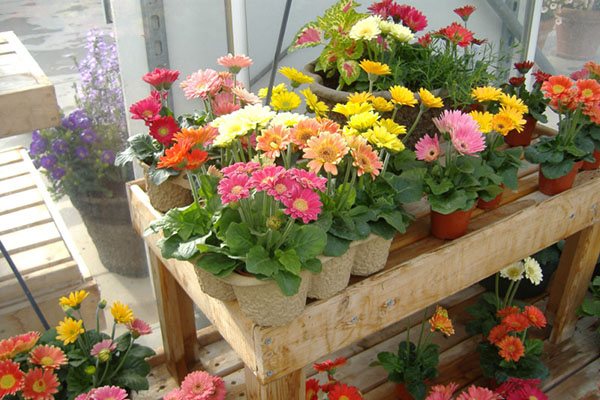

The flowers are a basket inflorescence. Their sizes in some varieties reach 30 cm. Elegant giants bloom for 3-4 months. Seeds remain viable for a very short time - about 6 months, so when buying seeds, you need to monitor both the expiration date and the time of their collection.
Winter care
Gerbera can withstand winter in the open air only in regions with a mild climate. Under other circumstances, it must be transplanted into an ordinary flower pot for the winter. Alternatively, you can place the dug out plant to winter in a basement or any other cool place.
Gerbera flowers continue to bloom from mid-autumn to mid-spring (winter) with auxiliary light and an average temperature of 22˚C. But you should not grow it without rest, since after 2 years, the flowering will become sluggish.
In view of this, in December it follows:
- Place the gerbera in a bright room;
- Reduce temperature to 11˚C;
- Limit watering.
Under these circumstances, a dormant time comes, which will continue until the end of the winter period. Note that winter ends in mid-spring!
Output: As you can see, there is nothing difficult about growing a gerbera. You just need to adhere to the above tips.

